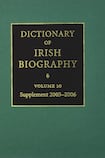
“The reader’s first question of the biographer is always going to be, what was she, or he, like?’”
This observation by the eminent biographer Hermione Lee both encapsulates the fundamental curiosity that drives the reader and the writer of biography, and underscores its essential difficulty. Each subject imposes different demands, and each story is moulded and buffeted by powerful forces: the biographer’s own tastes and subjectivity; the subject’s stealth and cunning in hiding aspects of her or his life from view, sometimes from beyond the grave; issues of loyalty, family possessiveness and emotion. Material is excluded and included, deliberately – and surrounding all this, the question of cultural context, which defines the limits of that which may be said, or claimed. “Truth” is, in other words, the most unruly of subjects.
All the more reason, perhaps, to treasure texts which establish a set of foundations on which to build these lives – or at least overtly and consciously attempt to do so. And so we may be grateful for the existence of the monumental and handsomely produced Dictionary of Irish Biography, which has categorised and pieced together versions of 10,000 Irish lives (and counting) over the last three decades. The project began as a shoestring pilot project in 1983: it took over a decade to find its financial footing – and now Volumes 10 and 11 have appeared, bringing the story up to 2010, and adding further value to our collective cultural archive.
Nothing rushed
This is a gargantuan project, and one which is augmented regularly online – and the stories gathered here are given the necessary space, with nothing rushed, nothing constricted, and each extraordinary life given space to breathe. To give just a few from a constellation of examples: journalist Mary Holland is described as combining "the manners of a grande dame with political radicalism and emotional openness", the entry illuminating gracefully her principles, personality, and socially and politically valuable career; the portrait of author Clare Boylan spotlights the ability of her writing to illuminate female experience in new and significant ways, and underscores the pathos of her early death shortly after her novel Emma Brown (2003) had been published to considerable praise; the entry on actor Maureen Potter captures the breadth – too frequently forgotten – of her talent and experience, from child star through to old age; and the profile of Irish-language scholar Breandán Ó'Buachalla assesses his valuable legacy against an explicitly European context: "what sets Ó'Buachalla's scholarship apart," notes the Dictionary, "was the sheer rigour with which he applied this philosophy to the Irish-language archives" – in the process debunking a range of cultural myths.
Entries are by no means hagiographic, and are from time to time written with a cool tone which adds much to the texture of these volumes. The architect Sam Stephenson emerged from a radical political household, but we are told drily that this “prevailing leftish ideology exerted little lasting influence upon him”; and later in a lengthy entry, Stephenson is recorded as having called down “a plague – bubonic, or other approved” upon those citizens unwilling to see Dublin’s Georgian terraces torn down to make way for his Modernist dreams. Controversial and tragic details are presented in unvarnished form: for example, the decline of snooker player Alex Higgins from the professional successes of the early 1980s into drug, gambling and alcohol addictions is detailed unsparingly: Higgins was “consumed by his grievances, and he inflicted them on anyone available, and alienated all but his most loyal friends.”
Achill
These volumes widen to satisfying and sensible effect the definition of an "Irish" life: the entry on the Nobel-winning writer Heinrich Böll traces the tremendous impact of his Irish Journal (1957) upon generations of German readers, and acknowledges in particular his close connection with Achill; and Mo Mowlam's monumental and still insufficiently recognised contributions to Irish national life are remembered here. And most potently, each volume closes with a lengthy catalogue of previously excluded or forgotten "Missing Persons", thus beginning to address the systematic and implicitly terrifying erasures which have characterised the study of history in our collective past. Emblematic in this respect is the entry on trade unionist Rosanna "Rosie" Hackett, after whom a Liffey bridge is named today: such work does much to illuminate the course of a life that made a significant impact in the social rather than the official political annals of the country.
These volumes have the cumulative effect of being deeply moving: an archive of lives lived, and captured by means of careful and scrupulous memorialisation. One can hardly expect many Irish households to collect an expensive set of these volumes for their own shelves (although they have been made available for free to all Irish schools; and subscriptions are available online) – but they will richly repay a leisurely visit to the local library.
Frost: That Was The Life That Was, Neil Hegarty's biography of David Frost, is published by WH Allen











